Charger Joinrun S4
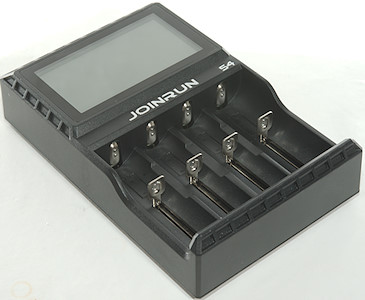
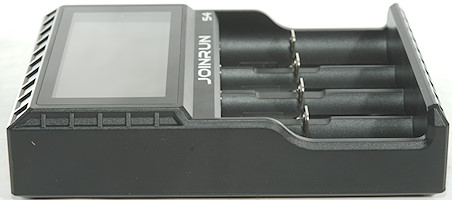
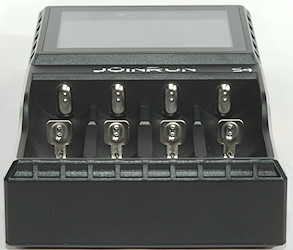
Joinrun is a fairly unknown brand, but they are selling a couple of different chargers on Aliexpress. The models are very close to some models from other brands, but there are some differences in design.
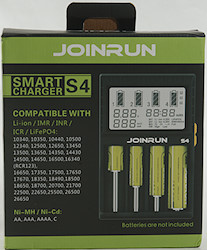

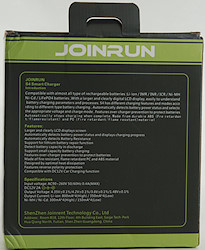

I got the charger in a cardboard box
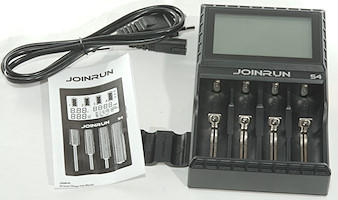
The pack included the charger, a mains cable, a AAA spacer and a instruction sheet.
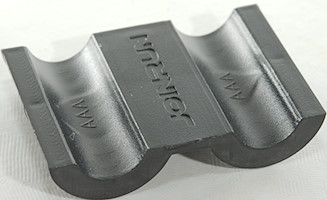
The AAA spacer is not to make the battery longer, but to center the battery better in the slot. The charger can handle AAA cells without it, but they are easier to place when using this spacer.
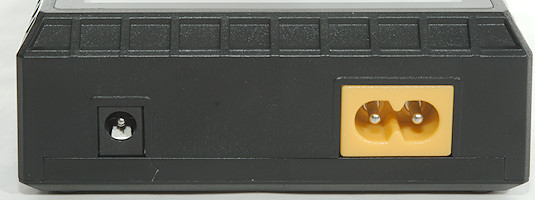
The charger can both work on mains voltage and 12V.
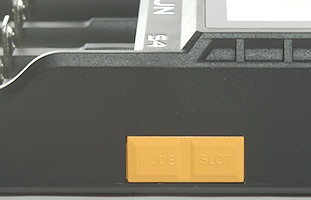
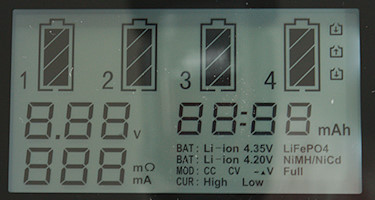
The user interface is a display and two buttons. The display will only show information for one slot at a time, the usual information is voltage, charge current and used time, on slot four it is also possible to show capacity.
The SLOT button is used to select slot.
The MODE button select what to change (Voltage/Current/Test) by short presses (Select item will flash), the actual value is selected by longer presses
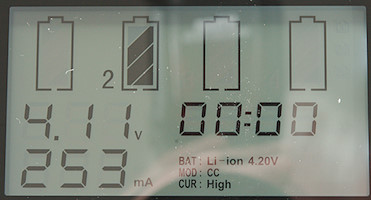
Charging a 4.2V LiIon with high current
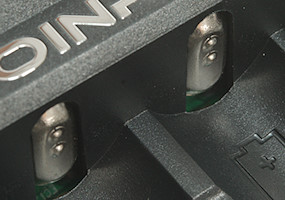
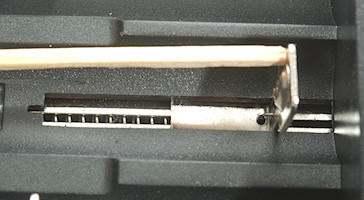
The charger has the usual slider construction. It can handle from 29.5mm to 69.5mm, this prevents the charger from handling the longest protected 18650 and 26650 batteries.
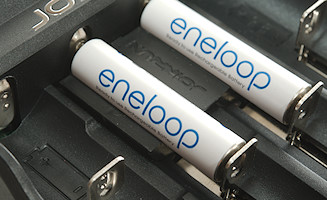
Here is some AAA cell with the spacer under them.


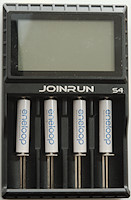
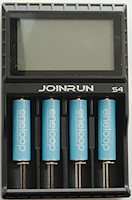
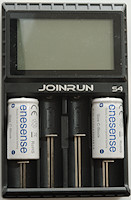
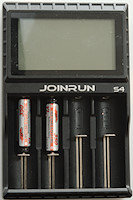
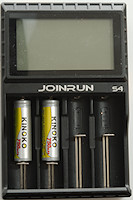
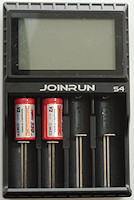
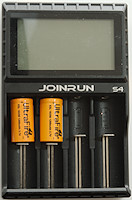
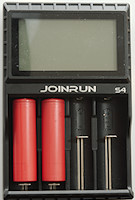
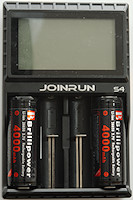
Measurements charger
- Power consumption when idle is 0.3 watt (Background light off).
- Without power it will discharge a LiIon battery with about 0.55mA
- Without power it will discharge a NiMH battery with about 0.1mA
- A full LiIon battery will be charged with 0.4ma
- Below 0.12Vvoltage the charger will charge with 300mA.report error
- Up to 2V the charger assumes NiMH
- Above 2V the charge assumes LiIon and uses full charge current.
- Charger will not restart if battery voltage drops.
- The charger will restart when a battery is inserted or power is cycled.
- The meter shows too high voltage below 0.8V.
- The meter is within 0.03V above 0.8V, mostly within 0.01V
Charging 4.2V LiIon
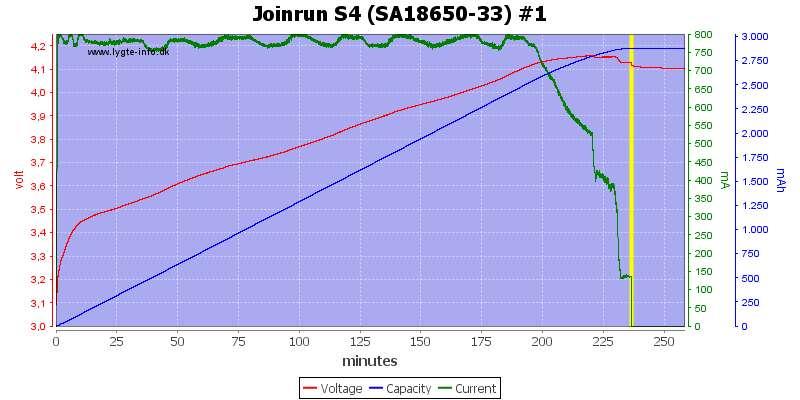
This is a CC/CV charging, but the final voltage is a bit low and the termination current is rather high, this means the charged voltage ends up fairly low.

This slot is the same.
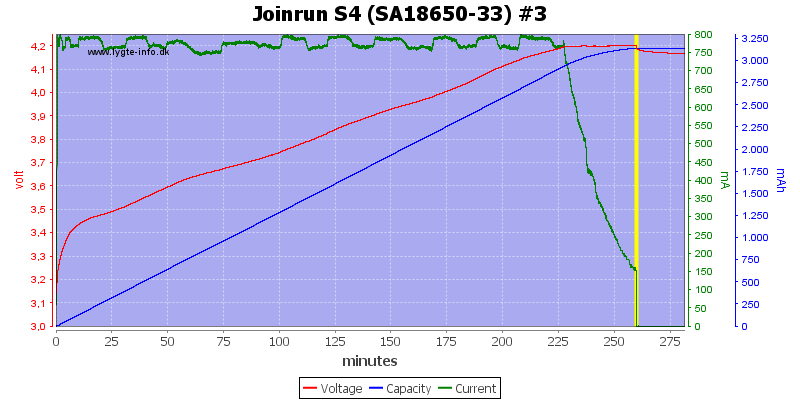
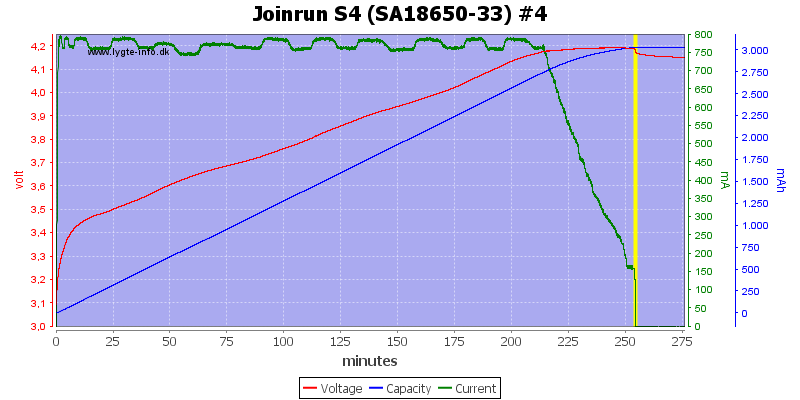
The two last slots are perfect with termination voltage
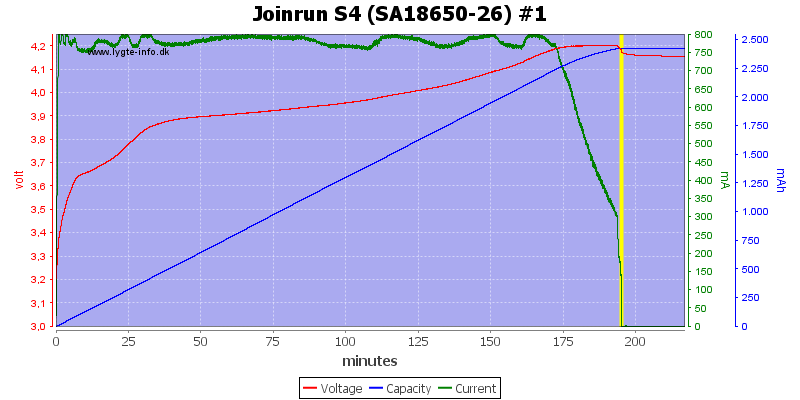
But slot #1 do not always use a low voltage, here it is fine enough.
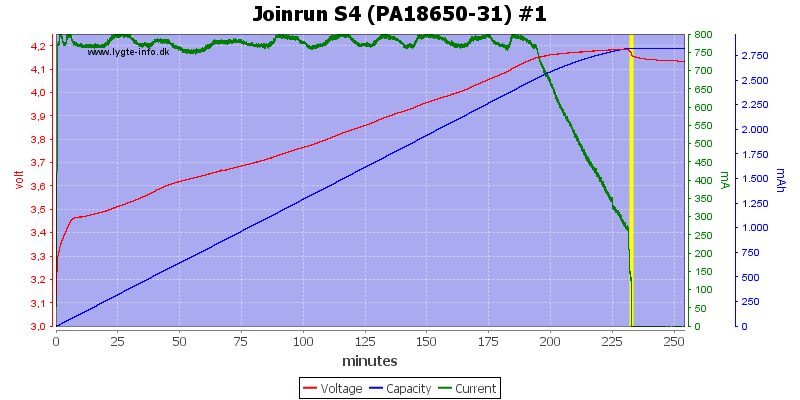
It is also fine here.
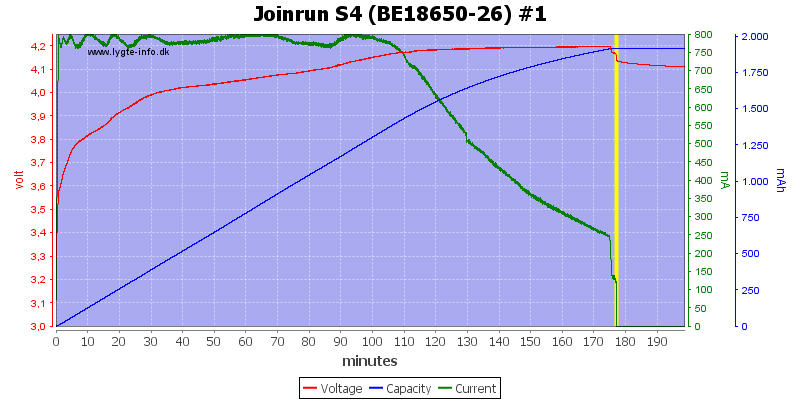
And here, but the termination current is a bit fast.
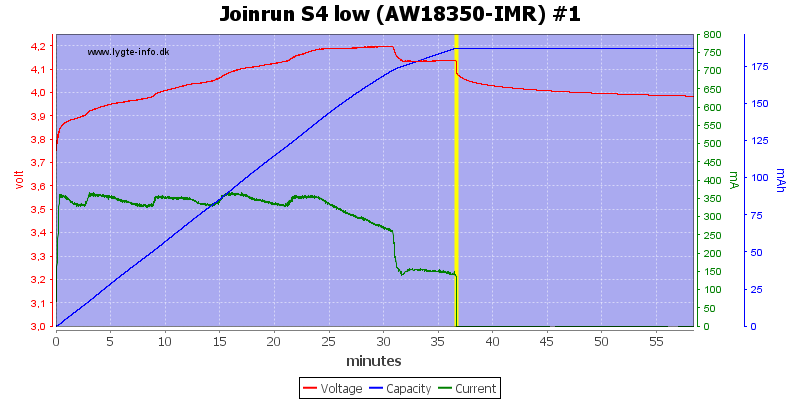
This old cell is not handled very well.

It do better with this cell, but the CV phase is not that good.
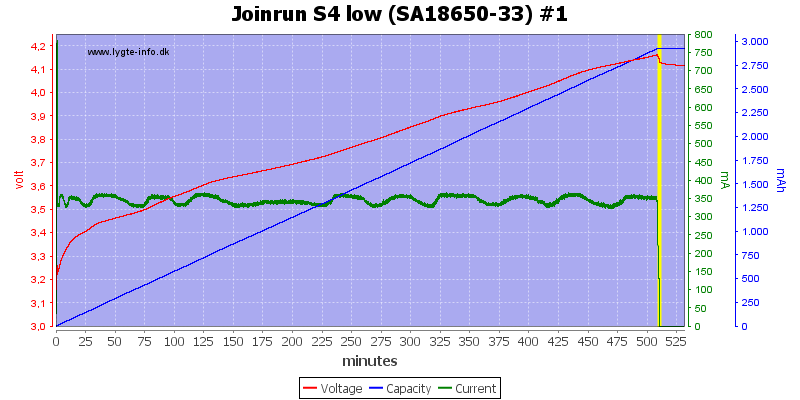
Here I charge a 18650 at low current, the CV phase is completely missing.
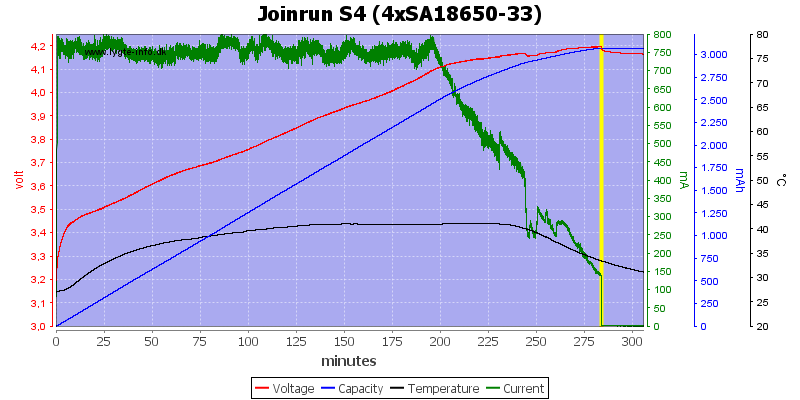
It can handle 4 batteries at full current and this time slot #1 looks fine.

It requires up to 1.4A from 12V to charge four batteries..
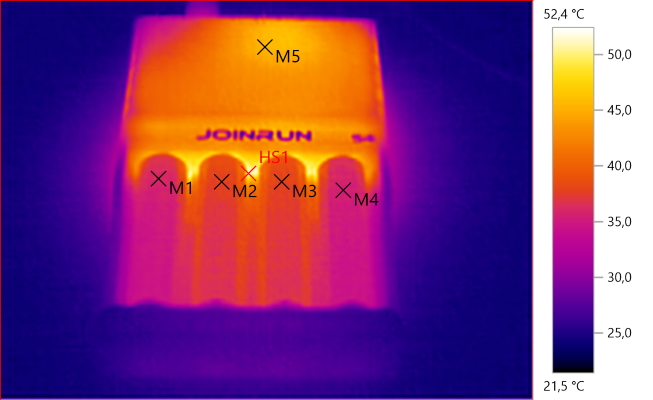
M1: 36.1°C, M2: 37.8°C, M3: 37.8°C, M4: 35.6°C, M5: 45.4°C, HS1: 52.4°C
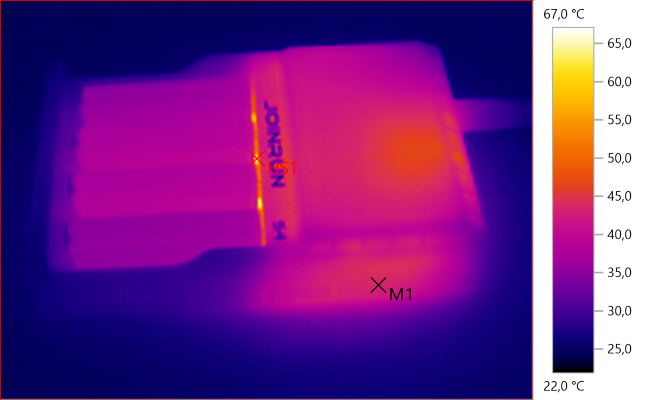
M1: 43.5°C, HS1: 67.0°C
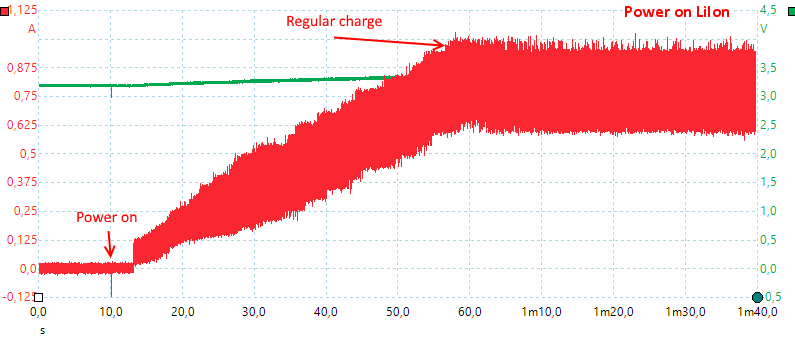
The charger starts very slowly, this gives the user time to change mode or battery type.
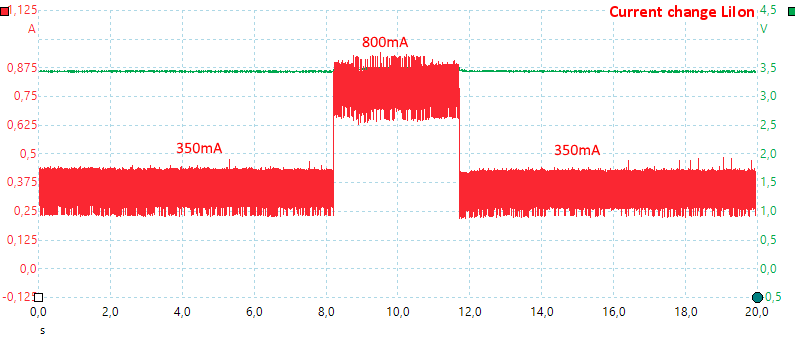
It is possible to change current at any time during the charge.
Testing 4.2V LiIon
A test cycle consist of charging the battery, discharging it and final charging it again.
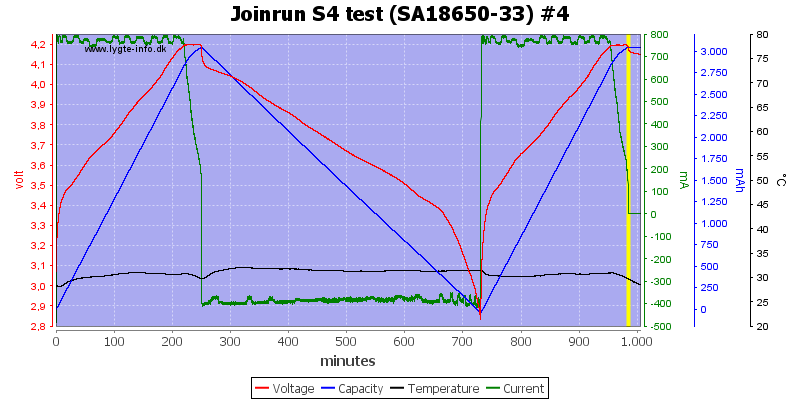
The testing mode is only available on slot #4, i.e. only one battery can be tested at a time.
Display showed 3376mAh

The discharge is done with constant current, no slow pwm.
Charging 4.35V LiIon
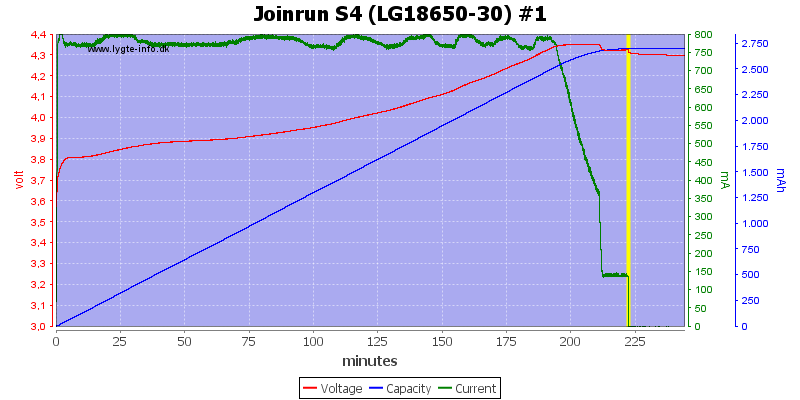
Charging a 4.35V cell looks fine enough.
Charging 3.6V LiIon (LiFePO4)

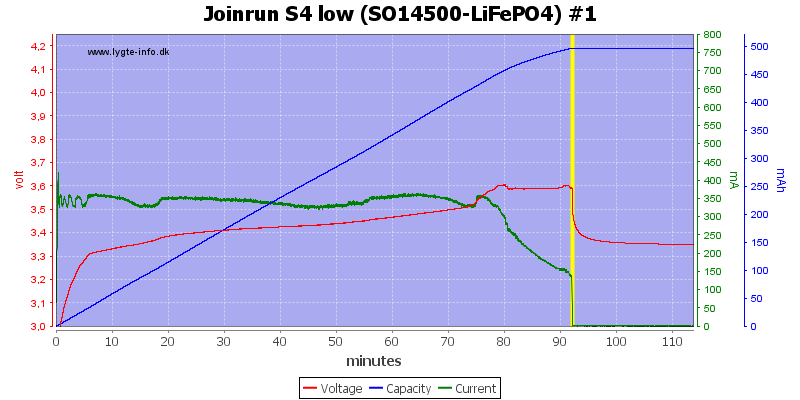
Charging LiFePO4 also looks fine enough.
Measuring Internal Resistance LiIon
Slot #4 will always measure internal resistance when a cell is put into it.

It works by drawing about 400mA for a one seconds and measuring the voltage drop.
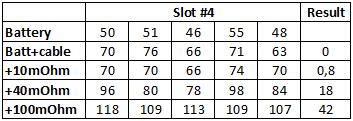
The results looks fairly consistency but the result is about 1/2 of the correct value.
Charging NiMH
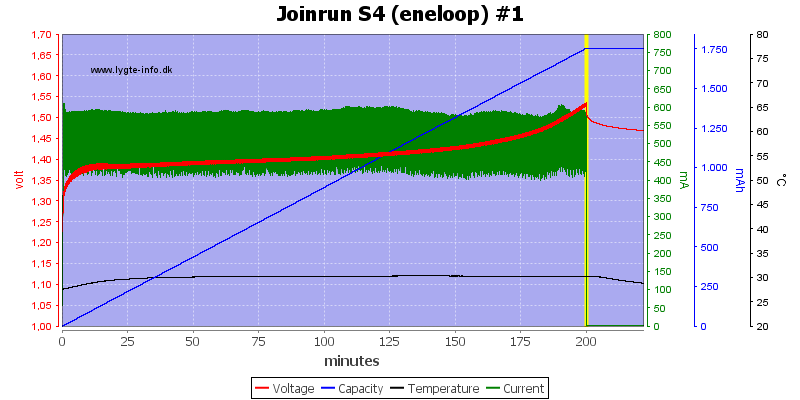
The charging uses constant current and stops due to voltage termination, this means that it stops slightly before the battery is full, as can be seen on the temperature track (Temperature will increase when battery is full). There is no top-off or trickle charging.
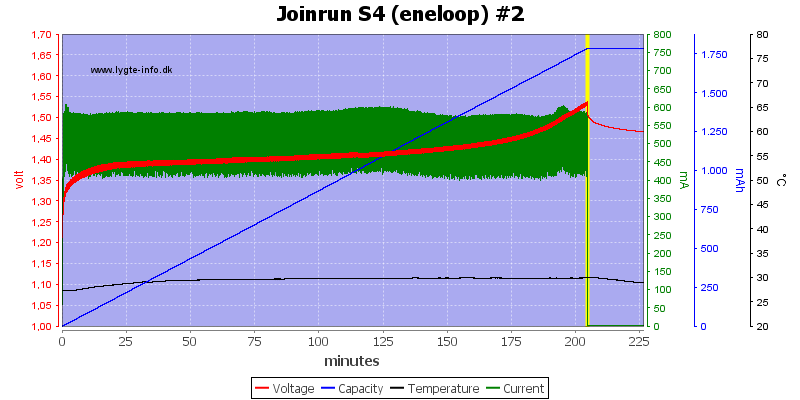
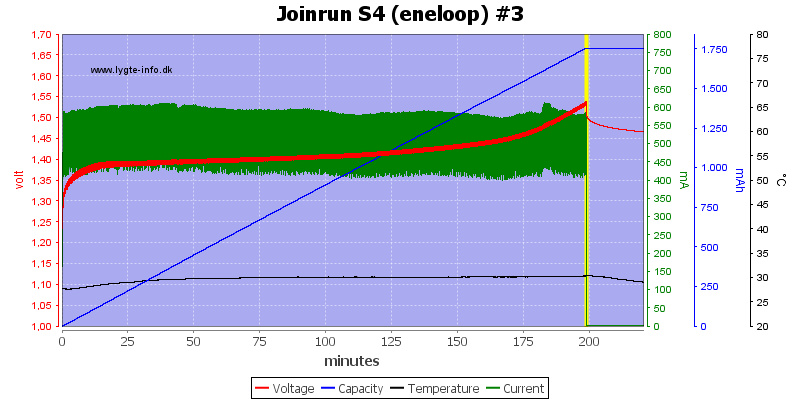
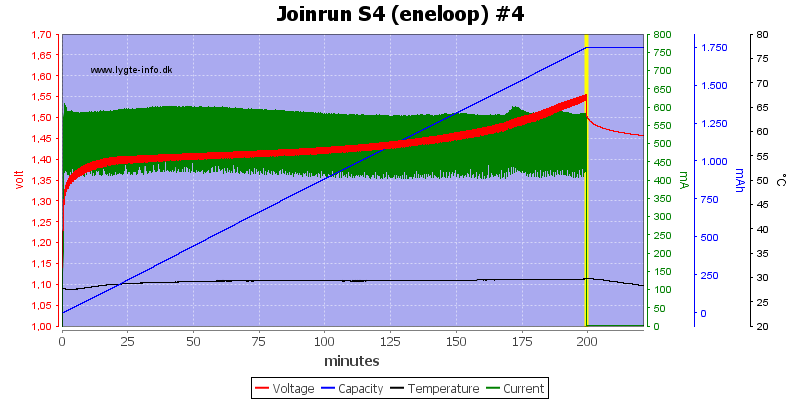
All slots works the same way.
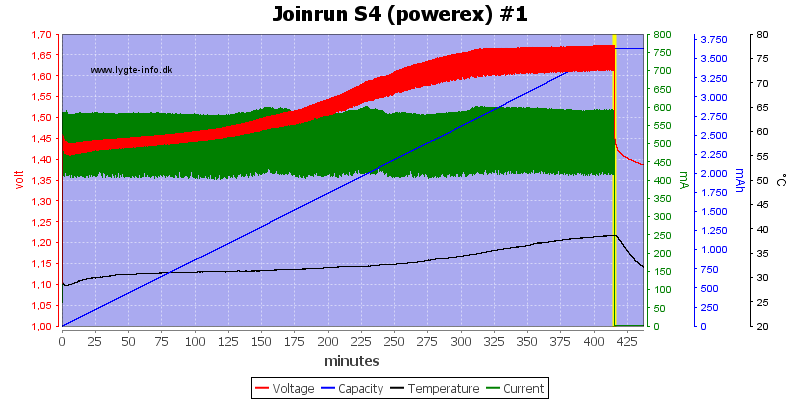
The powerex is a very old cell that is just about worn down, the charger handles it fairly well, even though the termination is a bit late.

This cell is just about full charged.
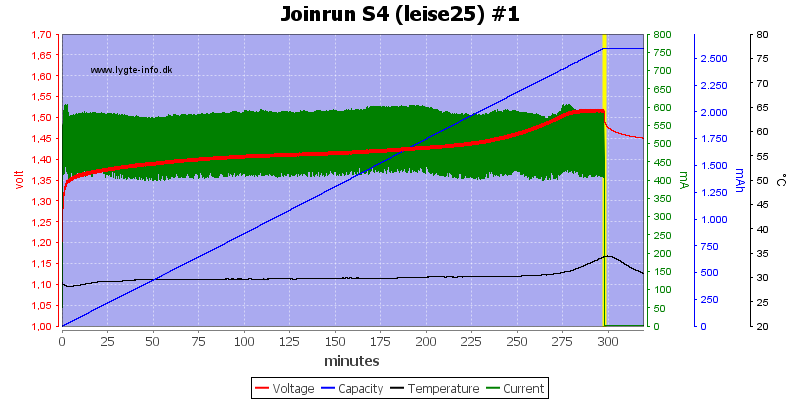
This cheap Chinese cell is full charged (It warms up).
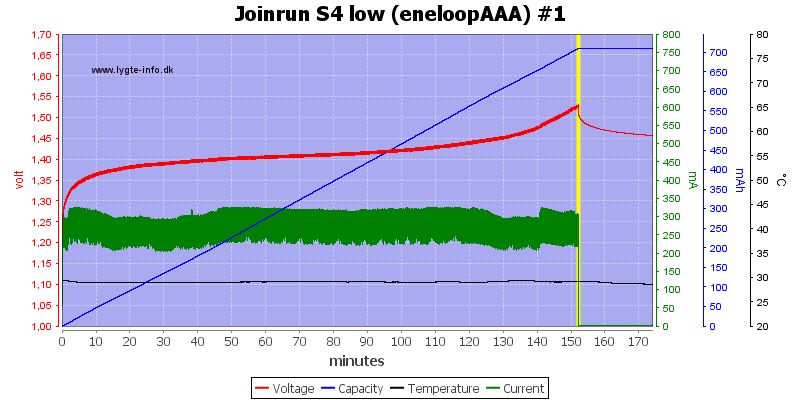
Again the cell is nearly full charged.
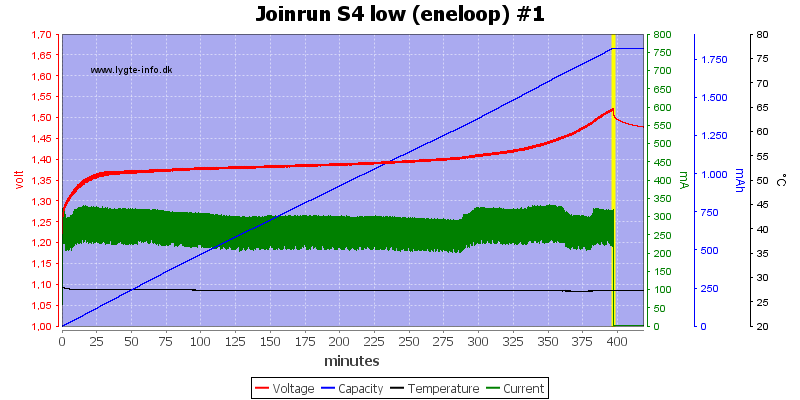
I will terminate on low charge current, but as usual the cell is only nearly full charged.
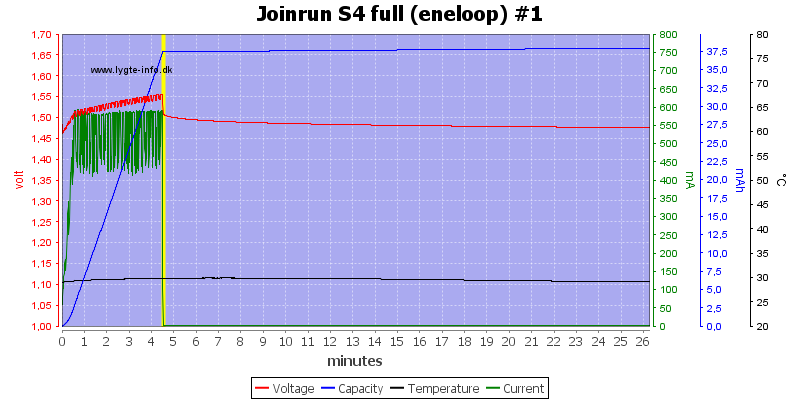
The charger stops fairly fast on a full cell.

It can also handle 4 cells at full current.
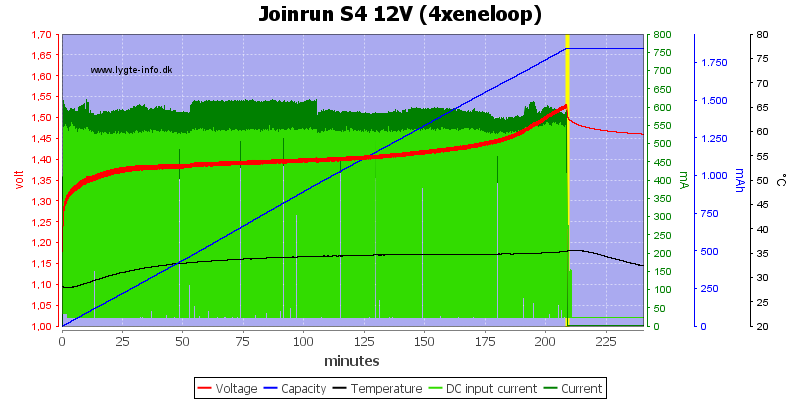
The low charge current means the charger has a fairly low current draw from 12V of about 550mA
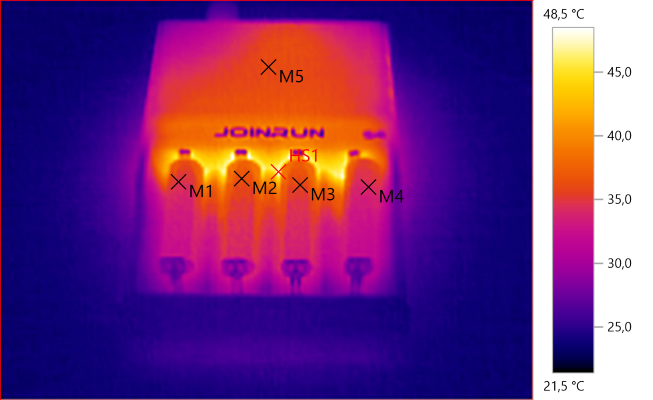
M1: 34.5°C, M2: 36.6°C, M3: 35.6°C, M4: 33.9°C, M5: 35.7°C, HS1: 48.5°C
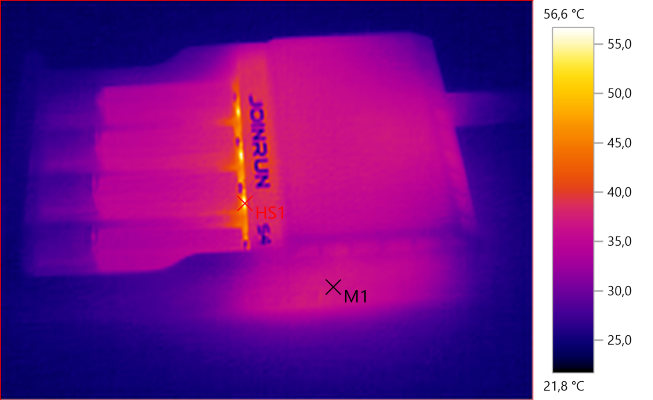
M1: 36.7°C, HS1: 56.6°C
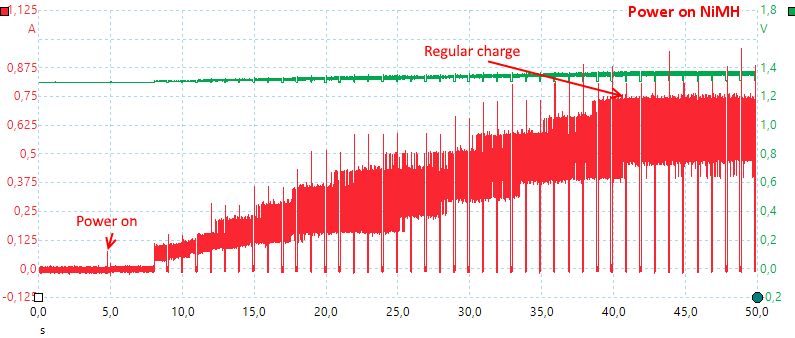
The charger starts very slowly, this gives the user time to change mode.
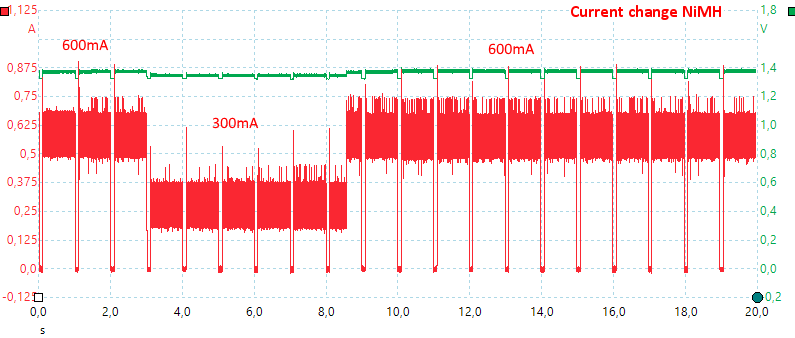
Current can be changed at any time.

As is common with all NiMH chargers the current is turned off to measure the NiMH voltage.
Testing NiMH
The testing mode is only available on slot #4, i.e. only one battery can be tested at a time.
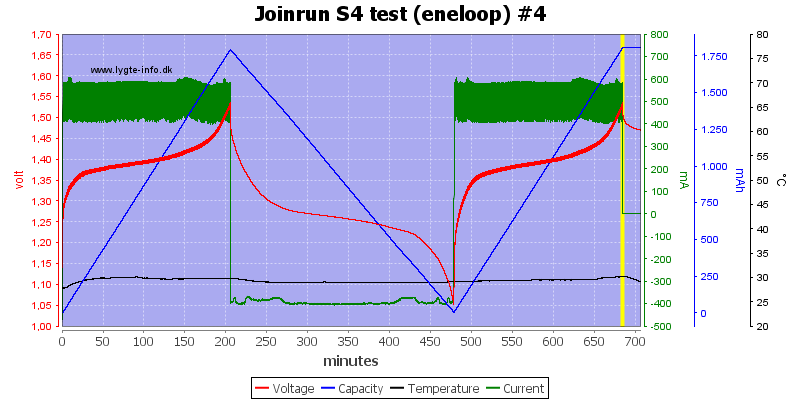
Display shows 1925mAh
Measuring Internal Resistance NiMH
Slot #4 will always measure internal resistance when a cell is put into it.
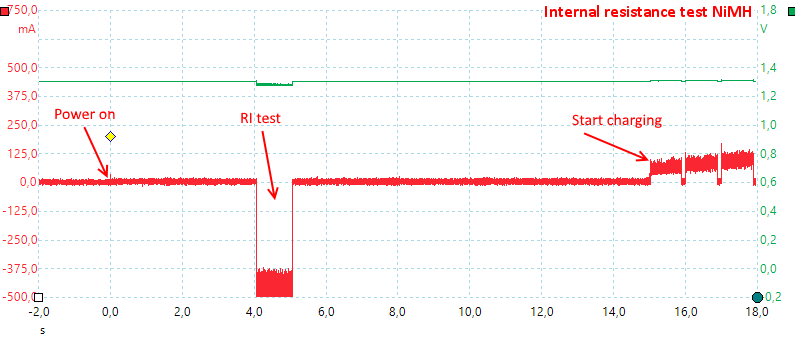
It works the same way as LiIon by drawing about 400mA for a one seconds and measuring the voltage drop.

These results are also fairly consistent, but again way to low.
Testing with 2830 volt and 4242 volt between mains and low volt side, did not show any safety problems.
Conclusion
The charger do not reliable fill LiIon completely, there is some tolerance, it would have been nice with a more consistent termination level.
NiMH is often typical voltage termination without a top-off charge, this means batteries are nearly full.
Analysing takes long time and with only a single slot that can analyse, it takes a very long time to check a couple of batteries.
There is nothing as such wrong with the charger, it will safely charge batteries, but with the above issues I will rate it acceptable.
Notes
The display and functions in this charger matches another charger I have tested, but the electronic works slightly different.
Here is an explanation on how I did the above charge curves: How do I test a charger





































































